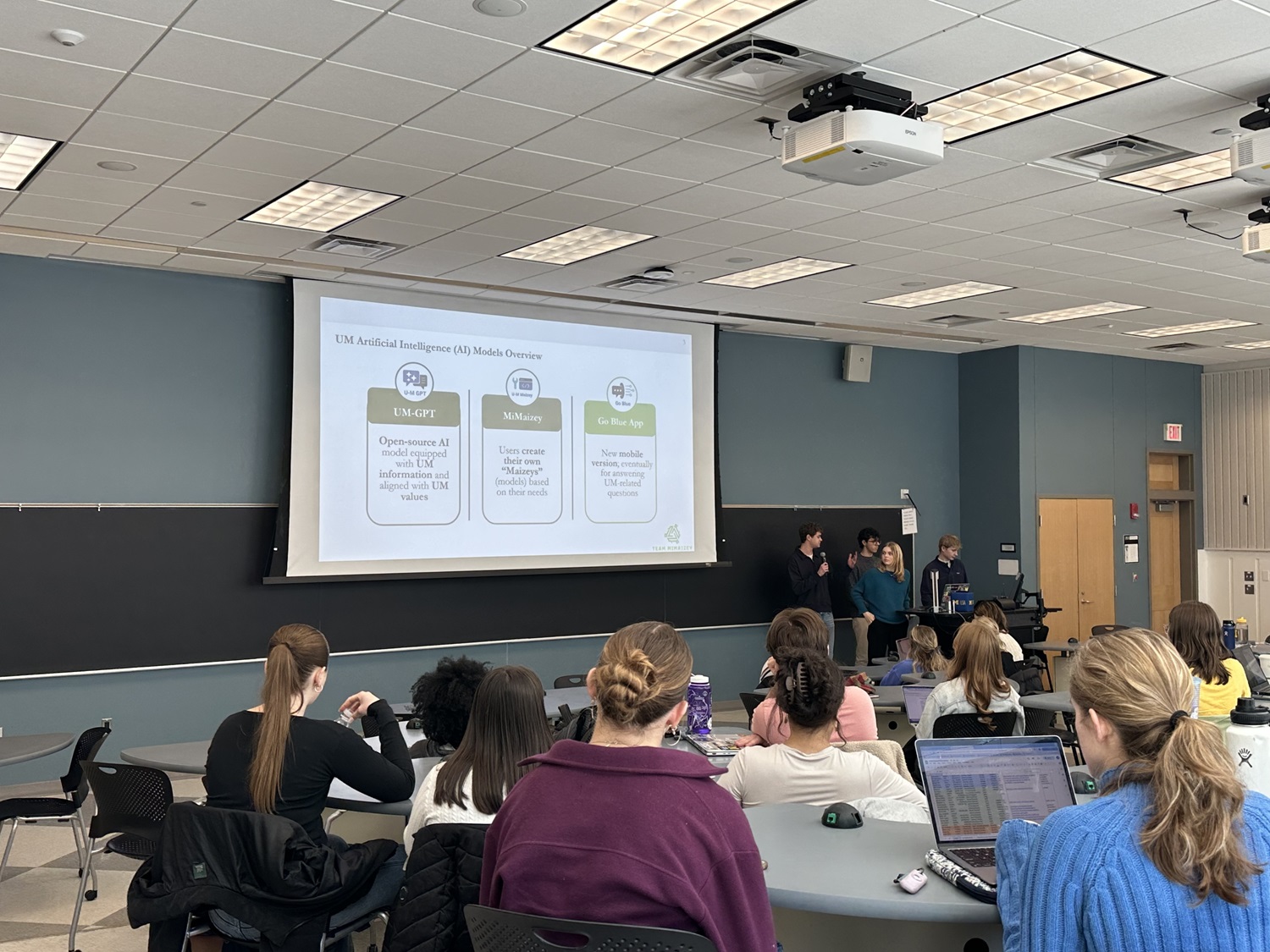University of Michigan AI Services: AI and Sustainability
At the University of Michigan, we recognize our responsibility to manage the energy consumption associated with AI technologies. We are committed to accurately accounting for this usage as part of our Scope 3 emissions analysis and future goal-setting processes.
Addressing the energy demands of AI is not just a university issue—it is a societal one. As an institution, we aim to leverage AI in a responsible manner, aligning our actions with our broader climate action goals.
U-M takes sustainability very seriously, and we work closely with our Office of Campus Sustainability to develop our sustainability goals and priorities. While we are still in the process of formulating our Scope 3 emission targets, including those related to AI computing, we are dedicated to remaining transparent about our efforts. Once these goals are established, our continued reporting will clearly articulate our strategies and progress towards achieving them.
Our commitment is clear—we must always approach AI with awareness of its environmental impact.
Generative AI @ U-M
U-M is a world leader in providing equitable and responsible AI access to our community and, from the start, we have been committed to managing the environmental impact of our generative AI platform.
AI does require significant energy consumption. However, U-M has been diligent in making sure that our generative AI platform has the lowest carbon footprint possible, while also providing the best possible tools to our community.
One essential benefit of developing our own generative AI platform is that it allows our university to more accurately track AI usage on campus. This enables us to quantify our energy expenditures related to AI usage—which would not be possible if we solely used commercial AI tools—and build that energy usage into our sustainability goals.
This “act locally, think globally” approach means that U-M can approach our sustainability efforts from a more informed and proactive position.
To give you an idea of our platform’s energy usage, currently, the U-M AI platform receives about one million queries every month. It has been estimated that, with ChatGPT, a single query consumes around 0.00289 kilowatt hours (kWh) of electricity (source). Using that standard, we can estimate that our AI platform is using approximately 2,890 kilowatt hours every month or 34,680 kilowatt hours every year.
For comparison, according to the U.S. Energy Information Administration, the average U.S. household consumes about 10,500 kilowatt hours every year (source).
That means U-M is able to provide a suite of first-of-their-kind AI tools for all of our students, faculty, researchers, and staff for the energy equivalent of a little more than three average U.S. homes per year.
Beyond our electricity usage, U-M went even further to mitigate any additional environmental impact through our choice of cloud hosting partner.
We chose to host our AI services on Microsoft Azure, a cloud platform with aggressive environmental sustainability goals.
In their 2024 Environmental Sustainability Report, Microsoft notes that they have been carbon neutral since 2012 and aim to be carbon negative by 2030 (source). This aligns nicely with U-M’s own 2040 Carbon Neutrality goals (source).
Encouraging Responsible Use of AI
U-M is committed to making sure our community understands the real-world impact of using AI. While these tools support creativity, learning, and productivity, it is important to recognize that each AI query, whether text-based or image-based, consumes more energy than a traditional search engine query. For instance, a single search engine query uses approximately 0.0003 kilowatt-hours (kWh) of electricity, whereas an average GPT query consumes about 0.0029 kWh—nearly ten times more energy. The energy demands are even higher for AI image generation. Creating a single AI image can use up to 2.9 kWh per 1,000 inferences, which is roughly equivalent to fully charging a smartphone.
Being mindful of how and when we use these tools is one small but meaningful way to reduce our collective environmental impact. At U-M, we invite our community to help us amplify our sustainability efforts by making informed, intentional choices in their use of AI.
AI and Sustainability: Education
AI has already become a significant aspect of sustainability discussions across university campuses. While it may currently appear to some as a specialized concern, its growing impact on energy consumption and the potential benefits it offers for streamlining sustainability efforts make it an increasingly relevant topic.
At U-M, we remain dedicated to exploring how AI can serve dual purposes—enhancing both academic outcomes and our environmental stewardship. We look forward to engaging the broader campus community in these discussions to collectively advance sustainable AI practices.
One recent example is a collaboration between our ITS Emerging Technology team and the university’s ENVIRON 391: Sustainable Campus course. In collaboration with their professors and ITS stakeholders, the students authored a report titled “Key Takeaways and Recommendations for Artificial Intelligence Usage at the University of Michigan,” which makes several key recommendations about promoting responsible AI usage at the university.

What Comes Next
At U-M, our goal is to be at the forefront of AI innovation while always remaining responsible global citizens. As we push the boundaries of what AI can achieve, we are equally dedicated to ensuring that the environmental footprint of these technologies is responsibly managed and reduced over time.
